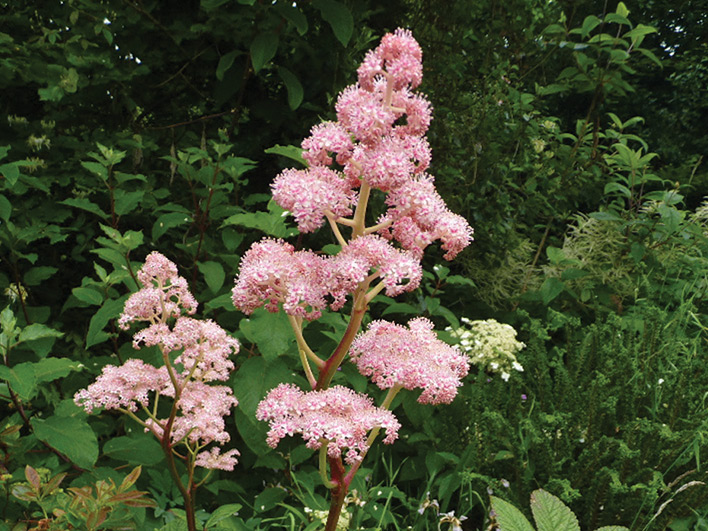Gardening Tips

Interesting Plants to grow for July
Rodgersias – spectacular eye-catching, bold plants for semi-shade. Named after John Rodgers (1812-1882), who led the expedition which discovered Rodgersia podophylla in Japan in 1855. He was a commodore/admiral in the U.S. Navy. There are five other species but there is much confusion over their identification.
Here are some which I particularly like:
Rodgersia Podophylla ‘Rotlaub’ (Red Leaf) – this is a magnificent plant with a big 5-lobed palmate leaf, emerging bronzy-red and retaining its colour for some time. It has a white flower in July. Height and spread: 1.5m x 1.5m.
Rodgersia Pinnata ‘Chocolate Wing’ – smaller than most rodgersias and much slower to increase. It has heavily pleated dark chocolate leaves — the more light, the more chocolate. This had red or pink flowers. Height and spread: 60cm x 60cm.
Rodgersia Aesculifolia Var Henrici – this has pleated horse-chestnut-like leaves and pink or white flowers. Height and spread: 1m x 1m.
The plants can easily hybridise, hence the confusion over identification.
They prefer a damp but not wet site in semi-shade, with a woodland type high humus soil. They will grow in sun but will need a reliably damp but not wet soil.
Similar plants to Rodgersia:
Astilboides Tabularis – a similar plant which used to be classed as a Rodgersia has large light-green parasol leaves with a matt surface. This throws up sprays of white astilbe-like flowers in June/July. Height and spread: 1.5m x 1.5m. It grows in similar conditions to the Rodgersias but does not at all like sun. This plant is often confused with Darmera peltata which has a similar parasol-shaped leaf which is darker green and shiny. The leaves on this follow on after the pink ball-like flower emerges on a tall stem in April.
Goat’s Beard (Aruncus Dioicus) – is another fine plant for June/July flowering. This has lightly bronzed foliage and a big display of white flowers and can grow to 2m. Dioicus meaning two houses, means there is a male and female form. The male form is said to be more upright and floriferous but the female form is just as good and also has the benefit of attractive seedheads. It is completely herbaceous i.e. goes dormant in winter and re-emerges in Spring and will grow in sun or shade.
Astilbes – can provide colour from June through to August and range in height from 30cm to almost 2m. Colours come in white, cream, pink, and purple. Most cultivars prefer semi-shade and damp soil.
Things to Do:
01. Feed all your garden plants in early July with a general purpose fertiliser. Feeding any later will encourage lush growth which may succumb in the winter.
02. Keep dead-heading Cosmos and Sweet Peas to prolong flowering.
03. Keep side-shooting tomatoes.
04. Regularly pick runner beans.
05. Cut back out of place extension growths on rambling/climbing roses.
06. Prune wisteria extension growths back to 6 or 7 leaves from the main stem.
07. In the greenhouse make sure everything is well-watered and well-ventilated to prevent fungal diseases.
Claire Jenkins (MCIHort)
Bordervale Plants, Ystradowen, Cowbridge, CF71 7SX
01446 774036
Back to Readers CornerWe have been advertising now with The Village Directory for four years. We only advertise here as we found the work generated from our advertisement was tremendous. We have now increased our advertising with The Village Directory in other areas because of the service provided — Nicola PembertonOven Magic Wales